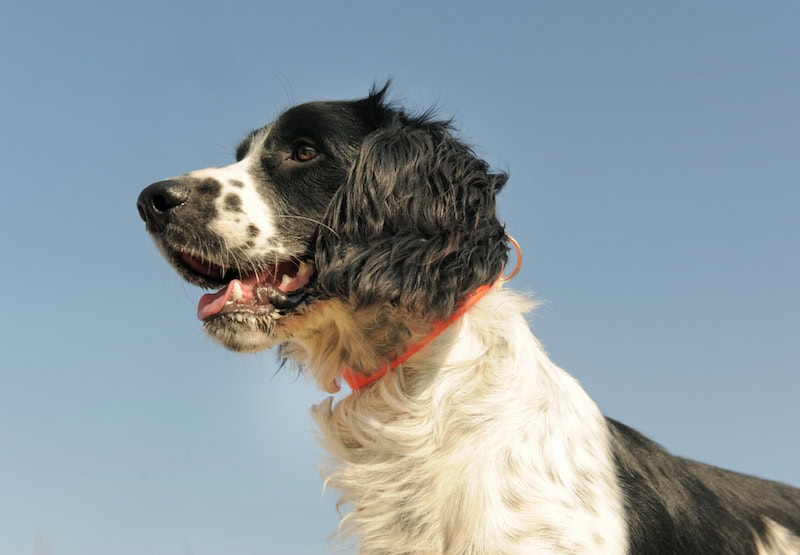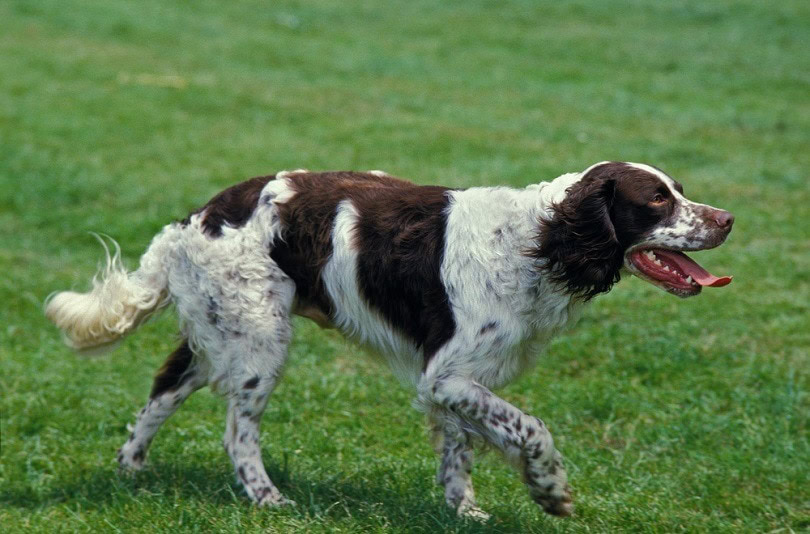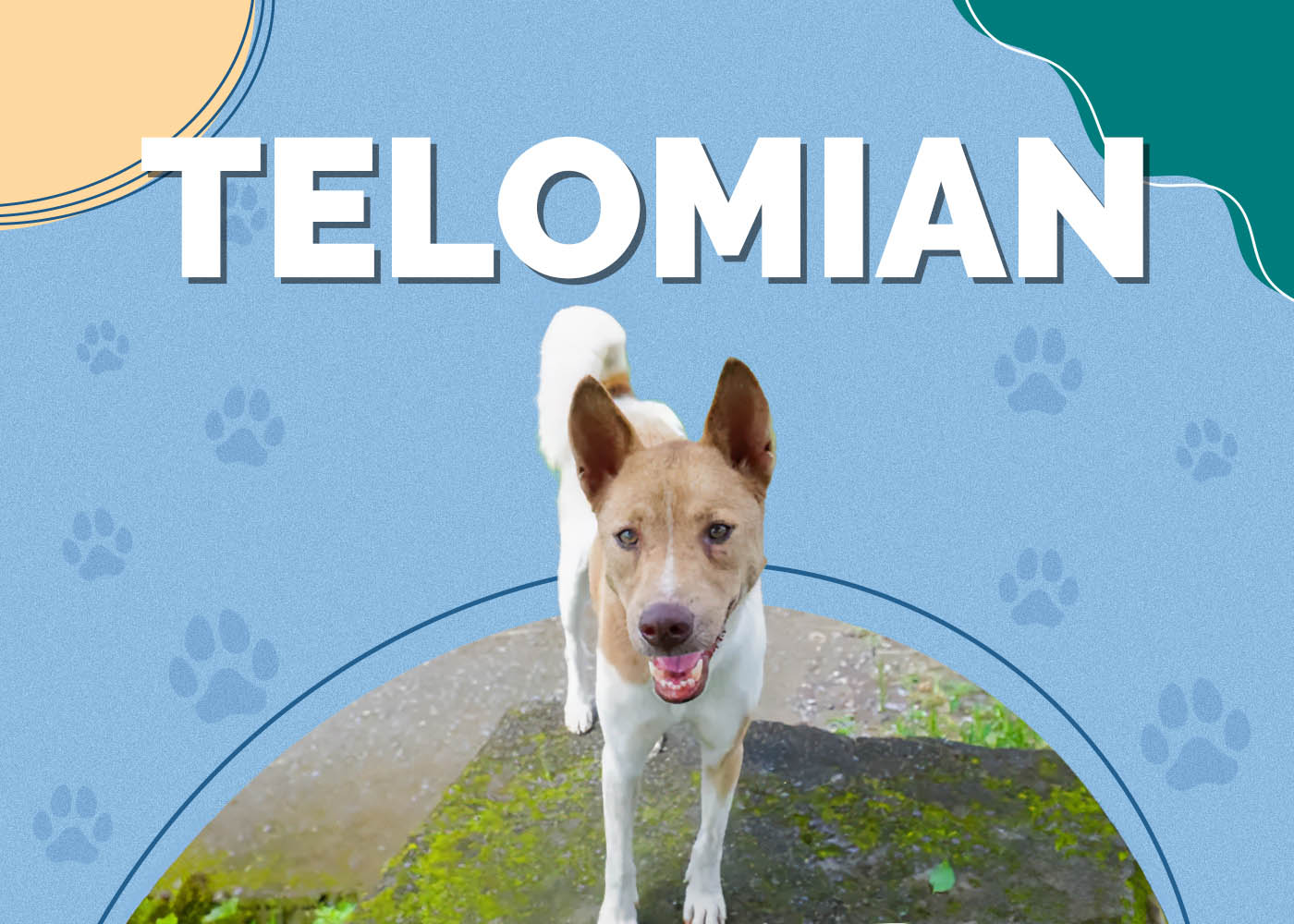French Spaniel: Info, Pictures, Characteristics & Facts

Updated on

| Height: | 21 – 23 inches |
| Weight: | 45 – 60 pounds |
| Lifespan: | 10 – 12 years |
| Colors: | Brown, white, pied |
| Suitable for: | Companionship, hunting, falconry, families, first-time owners |
| Temperament: | Docile, alert, gentle, sociable |
As you might expect with a dog with the French moniker in their name, these Spaniels are gentle and elegant. They are a purebred pup from regions in France and Canada. Their sociability with all matter of creatures makes them a relaxed dog, especially if you already have other animals.
These dogs are highly intelligent. Their history is a long one of hunting, even being trained to work as a falconer’s dog. Hunting suits them well because they are so agile, have high levels of energy, and are always alert.
The French Spaniel has other names typical to other regions, including the French Setter, the Canadian Setter, and Epagneul Français.
French Spaniel Puppies

French Spaniel puppies are more affordable than other dog breeds. Part of the reason for their low cost is a combination of the longevity of the breed and relative popularity. There is enough demand for them that there are plenty of breeders found around North America and Europe. They aren’t popular or rare enough to merit extra costs suiting the demand.
Since they are relatively popular, it is possible to find a French Spaniel in animal shelters. If you are interested in the breed, check around first to see if there are any in nearby shelters. They are also much cheaper from an animal shelter than they are from a breeder.
If you are looking for a breeder, ensure that they have a quality reputation. Although you might pay more for those with a good rep, it is worth it to know that you aren’t supporting a puppy mill. One sign of a quality breeder is that they offer a guarantee that the puppy is in good health. They are willing to provide health records and the parents’ pedigrees to give proof of viable genetics in your pup.
Good breeders reduce the amount of inbreeding in their litters so their puppies are healthier. It minimizes the chances of undesirable and recessive genes. They should also be willing to give you a tour of the area where they raise and breed their puppies, showing you that it is sanitary and safe.
If you still have questions about it, ask them if they have referrers in local veterinarians, groomers, or others. They should be people who know to vouch for the way they care for their dogs.
3 Little-Known Facts About the French Spaniel
1. French Spaniels can trace their lineage back through the Middle Ages.
The French Spaniel is an old breed. The theory is that they were selectively bred by mixing several varieties of hunting dogs. The blend that formed the French Spaniel created an elegant, affable dog that is easy to train and manage with enough exercise.
Documents found recording some of the lineages of the Spaniel dates them well into the Middle Ages. It was during this time that they spread throughout France and the surrounding countries. Yet, they remained almost unknown in the rest of the world until they were imported to Quebec.
One of the French Spaniel ancestors is believed to be the Chien d’Oysel, the founding ancestor for most of today’s pointing breeds. Other ancestors include the Small Munsterlander and the Dutch Partridge Dog.
2. The French breed’s usefulness as a hunting dog dwindled with the arrival of English hunting sports.
The breed was popular among French royalty and the nobility of other countries. They were bred on their hunting grounds to accompany the royals in all their hunting sports. They weren’t only a royal hunting dog, though.
French Spaniels were used as falconry dogs and in all types of bird hunting sports for hundreds of years following the Middle Ages. At the end of the 19th century and the beginning of the 20th century, the English came. They brought their cultural activities to the rest of Europe.
Their hunting sports didn’t require the unique skills of the French Spaniel. Instead, French hunters began to prefer English hunting breeds, so French Spaniels almost became extinct.
It was only by the hard work and grace of the French priest, Father Fournier, that the breed’s pure bloodlines were saved. He was a devoted enthusiast of the breed and desired to see all these bloodlines continue into the future. To do this, he worked diligently, preserving the breed and restoring them.
The Father started by gathering all the remaining French Spaniels he could find at his kennel in Saint Hilaire. It was here that he began to breed and rebuild their lineage, giving us the representatives that we know and love today.
3. James de Connick wrote up the first standard for these dogs in 1891.
James de Connick was the first to establish a standard for the breed in 1891. They had been around for hundreds of years before this. His initial description detailed that they were larger and more muscular than the Brittany Spaniels.
The standard has been revised since then, adapted to include the diverse evolutions that time has influenced over the breed.
They were officially registered in the Canadian Kennel Club in 1985. A club had been formed almost immediately upon their importation in the 1970s. The United Kennel Club recognized the breed in 1996, and they are now a part of the American Kennel Club’s Foundation Stock Service.

Temperament & Intelligence of the French Spaniel 🧠
The two most heavily associated traits to this breed are their intelligence and their docility. They make a calm companion, even with quite a bit of energy. The Spaniels seem to understand when to exert this and when it is unnecessary or even dangerous.
They make an excellent choice for first-time owners, especially if they are active people. It is because they do not have many stubborn tendencies and love to learn new things. As long as the trainer is consistent with them and gives them plenty of positive reinforcement, they are an easier dog to train.
French Spaniels love their human companions. They need their attention and companionship, and without it, they commonly suffer from separation anxiety. If you are around other people, have visitors often, or like to go for outings with your pup, this breed is fitting. They are friendly and always excited to meet new people, greet them, and receive pets.
Typical among the Spaniels, the French loves water. They will be in and out of it if given the opportunity. Keep this in mind that if you live in a hot area, they would love to have access to backyard pools.
Are These Dogs Good for Families? 🏡
French Spaniels are as perfect a fit for a family dog as you can find. They love people, including children. They are playful and energetic but calm when they realize it is necessary. They are a constant companion who always wants to play around and entertain themselves and their family members.
Does This Breed Get Along With Other Pets? 🐶 😽
French Spaniels tend to get along well with other dogs. Although early socialization is essential for all dog breeds, the French Spaniel would require more around cats and other smaller animals than dogs. These dogs have been used as hunters since the beginning of the breed. It signifies that they have a high prey drive around ferrets, small rodents, birds, and sometimes cats.
It is good to have more than one dog if you own these dogs, especially if you aren’t going to have enough time for them. Owning more than one dog helps stave off separation anxiety and gets them to exercise more without you around.
Things to Know When Owning a French Spaniel
Food & Diet Requirements 🦴
Although these dogs like to be out and running, they are only a medium-sized breed. They merely need between 2 and 3 cups of food each day. Talk to your vet to find the right balance of food to suit their daily activities.
As with any dog, it is crucial to give them a food high in protein. Invest in them and their continued health by researching and buying a high-quality diet.
Exercise 🐕
French Spaniels are a sporting breed. As such, they need plenty of time outside to be active. They aren’t considered to be a high-energy dog, but they still have plenty of it. Give them at least 45 minutes of exercise every day. It can be filled with several walks, a run, hiking, hunting, or a dog park.
If you like to run or walk with your dog, aim to achieve 9 miles by the end of each week.
Training 🦮
These dogs respond to positive training methods quickly. They are highly intelligent and do not have many stubborn tendencies that manifest.
Do not train these dogs using harsh methods. They do not respond well to these. By believing that they are not making you happy and satisfying the training requirements, they won’t progress. They will not understand what they have done wrong.
Training is also valuable bonding time with dogs of this breed. They require plenty of time with their human companions. These sessions satisfy your dog’s mental and physical exercise needs and give you both a chance to learn more about the other. They will appreciate you more for it.
Grooming ✂️
A French Spaniel’s coat is a large part of the beauty of this breed. It is long, somewhat wavy, and sleek. Brushing them twice a week is necessary to maintain its good condition. They do not tend to shed too much. The brushing is needed mostly to prevent massive knots from forming.
Even if you only brush them once a week, they should be fine. Use a metal comb with a pin brush to groom them. Make sure to hit the spots of feathering on their ears and tails. If tangles have begun to form, spray them with a detangler to make it easier and less painful.
Trim the hair that grows between the pads of their feet every couple of weeks. Make sure to clean their ears out with a dog wipe or soft cloth, since French Spaniels have long-haired and drooping ears. It helps reduce the potential of ear infections. Clip their nails as needed. With enough activity, though, it is not as necessary.
Health and Conditions ❤️
The French Spaniel is a remarkably healthy dog overall. They do not have any serious ailments that the entire breed suffers from commonly. They are an old breed and have maintained strong bloodlines from the beginning.
Although their excellent health is valid as a whole, each dog has the possibility of severe conditions. Take them to their veterinary appointments consistently so you catch it as early as possible if anything arises.
- Hip dysplasia
- Elbow dysplasia
- Eye problems
- Nothing noteworthy
Male vs. Female
There are no noticeable differences between the personalities of males and females in this breed. Although males might weigh more, they don’t vary widely in height. Male French Spaniels stand between 22 to 24 inches, while females only stand between 21 to 23 inches tall.
Final Thoughts
French Spaniels are elegant hunters and close family friends. They are an excellent companion, while at the same time, a useful help. They need plenty of attention from their family and can suffer from separation anxiety if they are alone too frequently.
If you need a dog that will be calm around your kids while still matching their energy level, consider the French Spaniel.
See Also:
Featured Image Credit: cynoclub, Shutterstock













